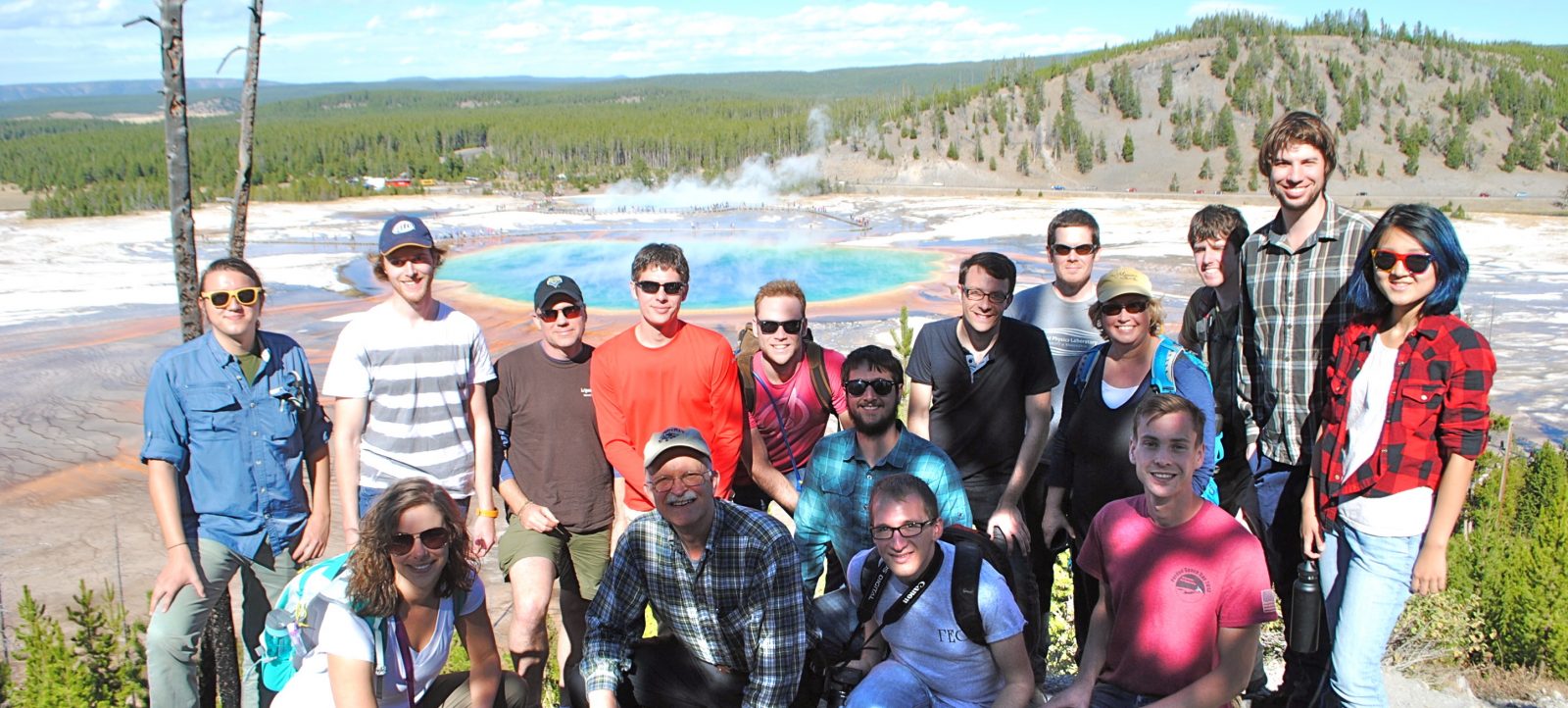UWAB student Jacob Lustig-Yaeger (Astronomy) attended this year’s workshop, and reported back on his experience:
In September (2015), students from the University of Washington Astrobiology Program traveled to Yellowstone and studied the interconnectivity of geology, hydrology, and microbiology in the context of life on and beyond Earth. We were joined by Niki Paranteau and David Des Marais from NASA Ames Research Center who specialize in microbiology and geology, respectively.
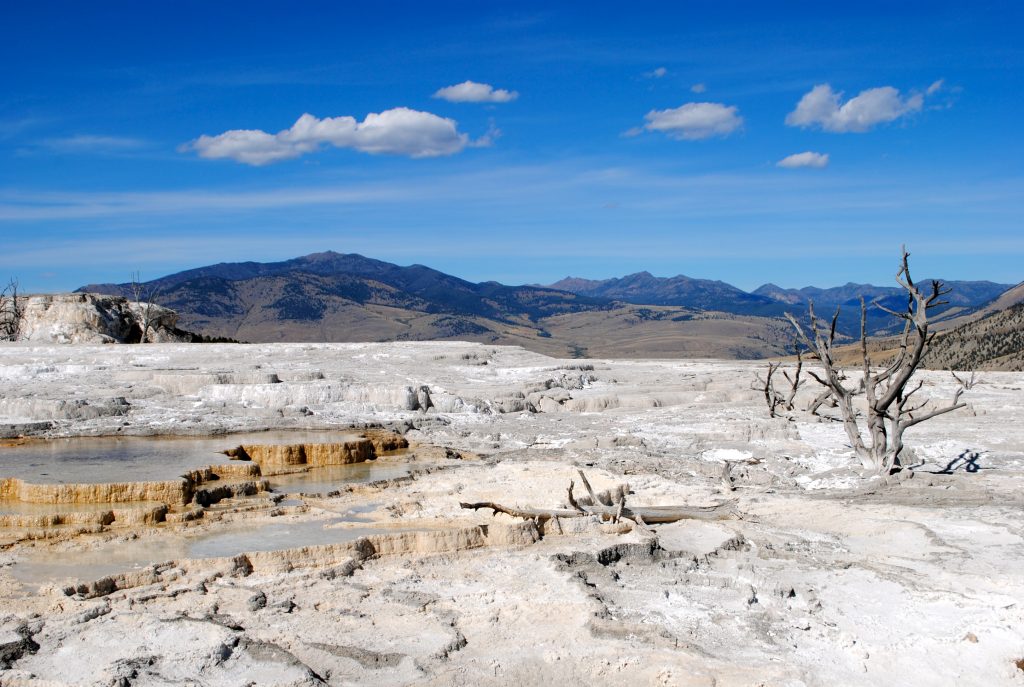
Appropriate for an astrobiology workshop, Yellowstone often feels like an alien landscape itself! Besides the erupting geysers and slippery limestone terraces, we saw steaming pools stained bright colors by exotic heat-loving organisms and bubbling mud pots spewing acidic water onto their scorched surroundings. Of course, Yellowstone is also home to more familiar mountain beasts: Charismatic Megafauna proved to be the bane of vehicular mobility in Yellowstone National Park. (And we did not enter the caldera to study human-bison relations!)
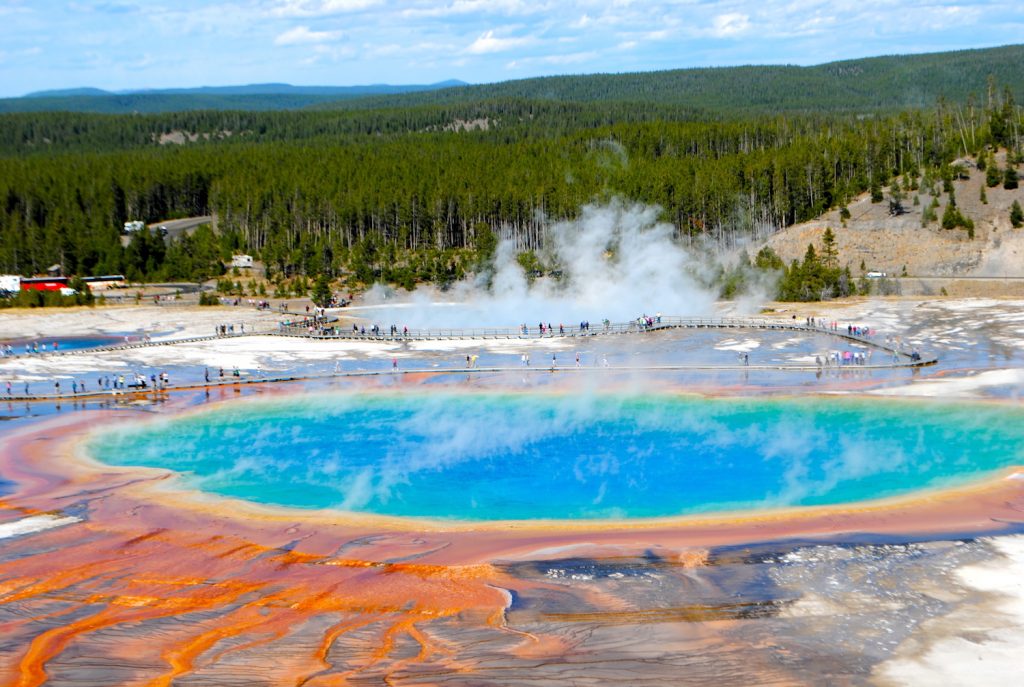
Amidst a sea of steam and onlooking tourists we conducted experimental measurements on the hot spring microbes, guided by the following questions:
- What can Yellowstone teach us about the evolution of life on Earth and Mars?
- Could Yellowstone be an early Mars analog?
- If we extend the Yellowstone environment to a global scale, are there remotely detectable signals that we can look for on extrasolar planets?
Here are some of the incredible things we learned about Yellowstone:
Geology:
Yellowstone is the result of over 15 million years of volcanic activity. Like the Islands of Hawaii, Yellowstone is the result of hotspot volcanism, a process in which plumes of magma from deep within the Earth penetrate the ever-moving crust. In the case of Yellowstone, as the North American plate slowly moves southwest it appears that the hotspot is moving northeast. In fact the eastern Snake River Plain, paved by magma flow, traces the path of the North American plate over the Yellowstone hotspot. Remarkably, a portion of the Absaroka mountain range (a sub-range of the Rocky Mountains) fell by the immense power of this migrating supervolcano.
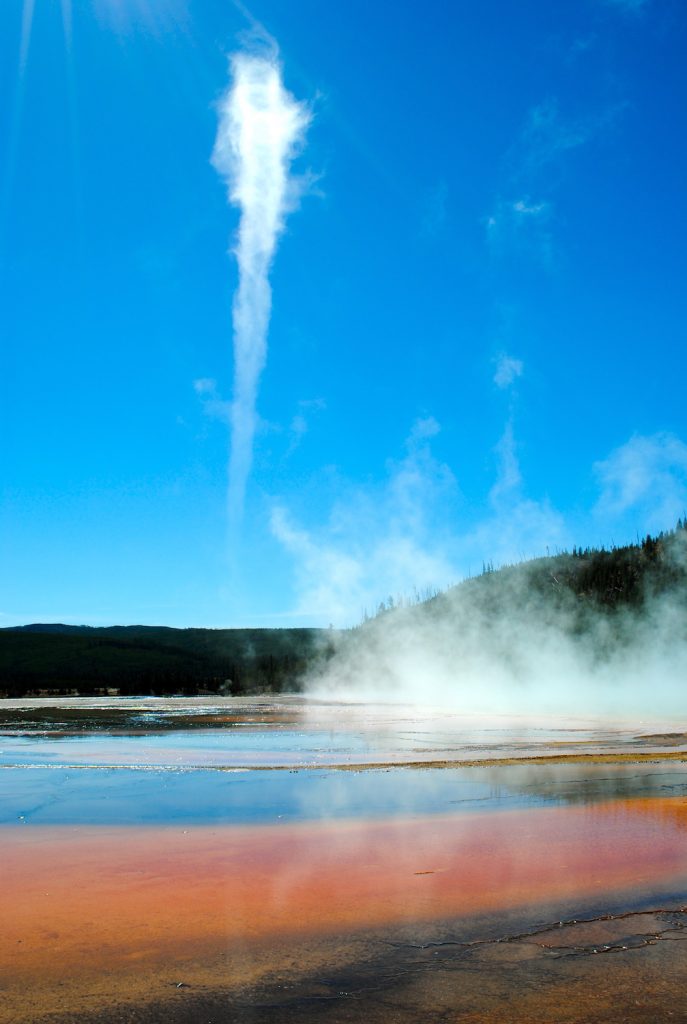
Hydrology:
Deep aquifers of snowmelt and rain are heated by nearby magma and rise back to the surface. Gas-depleted thermal water emerges gently into alkaline chloride hot springs, while other underground chambers boil and erupt violently as acid sulfate fumaroles, mud pots, and hot springs. The hydrothermal features of Yellowstone are harsh environments for typical plants and animals, but they are home to many species of heat and acid loving microbes.
Microbiology:
One of the most iconic sites at Yellowstone is the Grand Prismatic Spring, named for the beautiful rainbow of colors seen in the water as if it were splitting white light into its constituent colors by refraction through a prism. But rather than refraction, these alkaline chloride springs appear vibrant in color as a result of light reflected off of the phototrophic bacterial mats layering the ground beneath the water. NASA astrobiologist Niki Parenteau educated our group on how to determine the temperature of the water from the colors of the phototrophs (i.e. photosynthetic organisms). This works because thermal water emerging from the ground cools as it flows away from its source. So if you known what the maximum temperature a microbe can live at then you know the temperature of the water at color interfaces. For instance, the interior of the Grand Prismatic Spring is a deep blue—this region is too hot for phototrophs so is colored by scattering of light off small particles in the water—but the edge of the spring is colored orange by a unicellular cyanobacterium called Synechococcus. This (hard to pronounce!) phototroph can live only at temperatures less than 73 degrees Celsius, so we can deduce that the interface between the blue and orange is exactly 73 degrees. We confirmed this using laser infrared thermometers.
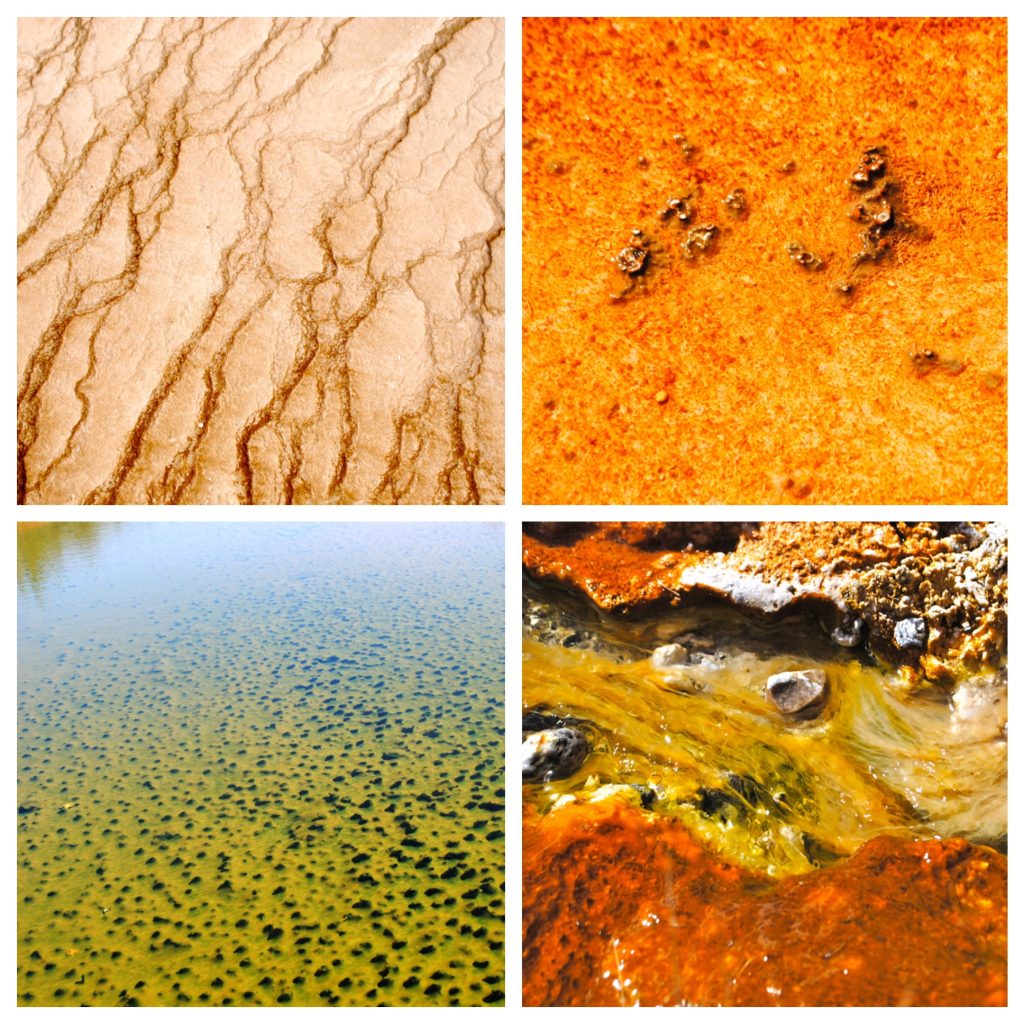
Astrobiology:
To the average Yellowstone visitor the colors associated with these alkaline chloride hot springs are perfect camera fodder. We were certainly no exception. However, unlike the typical tourist, one of our cameras was a reflectance spectrometer.

One can imagine that a few billion years ago these phototrophic mats were much more wide spread across the young and more geologically active Earth. Furthermore, one can predict that if live emerged on another, but similar, planet it too may spend time covered in something akin to phototrophic mats. In fact, that hypothetical far-away planet may be covered in phototrophic mats right now as photons reflected off its inhabited surface arrive here, at Earth. With a space telescope designed and built to directly image extrasolar planets, these planets may be observed. But while NASA plans this future telescope, we can use in situ measurements of bacterial mats to predict what these planets will look like.

